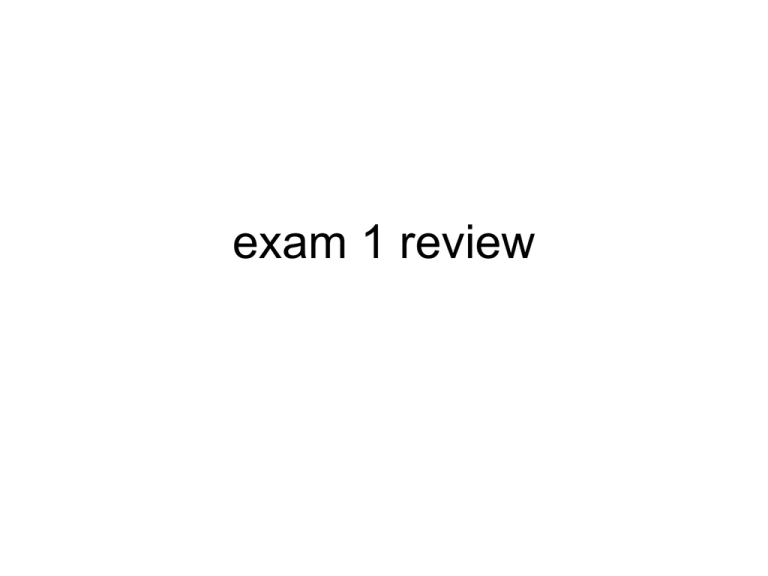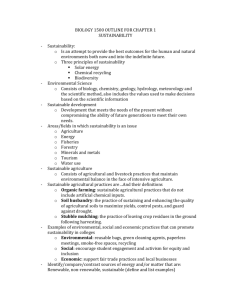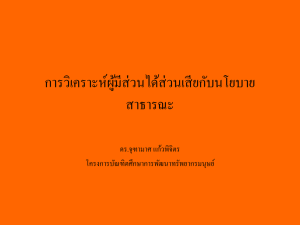exam 1 review - University of Puget Sound
advertisement

exam 1 review environmental decision making: benefit-cost analysis n PVNB PV[ NB0 ,..., NBn] i 0 n Bi i (1 r ) BC Ratio i n0 Ci i ( 1 r ) i 0 NBi i (1 r ) how do we get those benefits? Methods Revealed pref Stated pref Direct market price contingent valuation Indirect travel cost attribute-based models hedonic property conjoint analysis hedonic wage choice experiments avoidance expenditures contingent ranking nature and causes of environmental problems • Nonexclusive property rights => Externalities • No property rights => Open access problem • Public goods the market for steel expect 5 results 1. output of steel too great 2. too much pollution produced 3. price of steel too low 4. no incentives to search for ways to yield less pollution per unit steel 5. recycling and reuse of polluting substances discouraged since release into river is so inefficiently cheap to correct externalities • bargain (Coase) • taxation (Pigou) open-access • fishing / grazing rights / whales vs. chickens • tragedy of the commons • common-pool resources – nonexclusivity (exploited by anyone) – divisibility / rival (your use diminishes my use) bison harvesting public goods • characteristics – nonexcludable (even if do not pay cannot be excluded from enjoying it) – indivisible / nonrival (my enjoyment does not lessen your enjoyment) • national defense / air / information / diversity • free-rider problem how to think about the future? • Two period model • To maximize dynamic efficiency, set PV of MNB from the last unit in period 1 equal to the PVMNB from the last unit in period 2. Demand: P = 8-0.4Q, MC = $2 (constant) 20 total units 10.238 units in period 1 / 9.762 units period 2 Efficient prices? Marginal user cost? definitions of sustainability • Hartwick rule (“weak sustainability”) – value of the total (natural + physical) capital stock is maintained • Strong sustainability – value of the natural capital stock is maintained • Environmental sustainability – quantities of resources should be maintained (not value)











